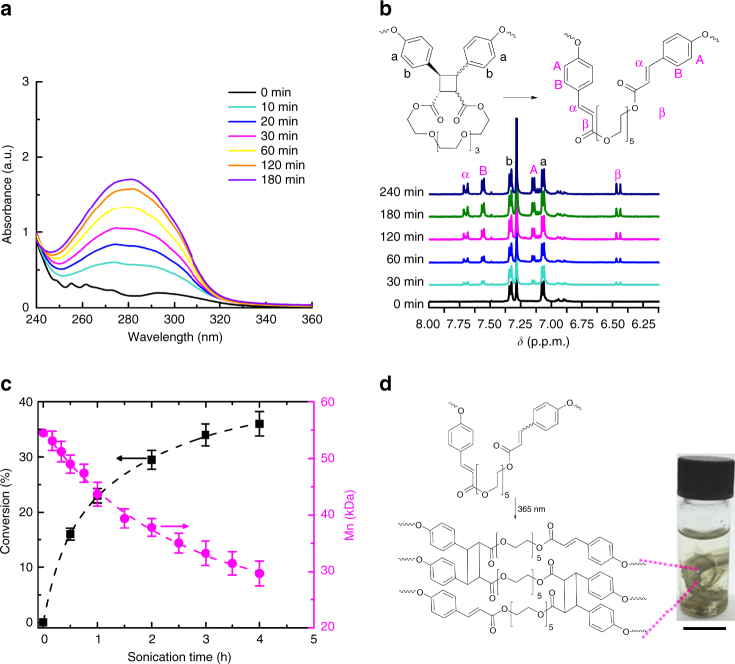Fig. 5.
Summary of mechanochemistry of macrocyclic cinnamate dimers in solution. a, b The evolution of the UV-vis (a) and1H NMR (b) spectra of a solution of P2 (M n = 54 kDa) during sonication is consistent with dissociation of dimers 2a to cinnamates, as evidenced by increases in the intensities of (a) the characteristic absorption band at 280 nm in UV and (b) 1H NMR resonances of the vinyl protons (marked α and β). c As is typical, sonication of P2 resulted in competition between dimer dissociation (black curve and y-axis), which does not reduce the polymer size, and random chain fragmentation (magenta curve and y-axis), which does. Conversion % (black curve) was determined as (1 + r)−1, where r is the ratio of the intensities of the 1H NMR resonances marked b and B in Fig. 5b. This conversion % correlates well with the absorbance at 280 nm (Supplementary Fig. 17). Error bars are standard deviations. d Irradiating mechanically degraded P2 creates an insoluble material, most likely by [2 + 2] photodimerization of cinnamates. The scale bar is 1 cm

